Calling all pit bull parents!
You likely already know that pibbles are some of the sweetest, most adorable doggos in the world, but did you know that pit bulls have a handful of somewhat unique nutritional needs?
And to keep your canine’s body healthy and tail wagging, you’ll need to keep these needs in mind when picking your pit bull’s dog food.
Don’t worry! We’ll make it as painless as possible. We’ll explain some of the things you need to know about pit bull health and nutrition, discuss the dog-food-picking process in general, and share a few of our favorite foods for pitties!
Let’s jump right in!
The Particulars of Pit Bull Nutrition
Generally speaking, pit bulls have similar nutritional requirements to other active, working breeds. However, the pit bull dog breed does exhibit a few peculiarities which warrant attention.
Pit Bulls Are Stocky, But Not Necessarily “Large”
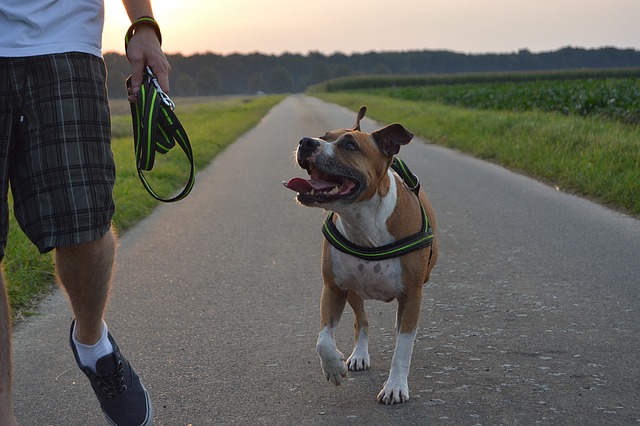
Pit bulls are stocky dogs with broad chests and blocky heads, but they rarely weigh as much as you would think by looking at them.
In fact, pit bulls rarely weigh more than about 60 pounds (although there are exceptions). While this is quite a handful of dog (particularly when it comes in such a high-energy package), they are best described as mid-sized.
So, given that they’re medium sized dogs, it’s wise to avoid feeding your pittie a dog food designed for large or giant breeds, as these foods often have reduced calcium and protein, relative to foods crafted for non-giants.
Because they only reach moderate sizes, pits rarely run into the same problems large breeds do when fed normally formulated foods.
Avoid Overfeeding, As Pitties Are Susceptible To Joint Issues
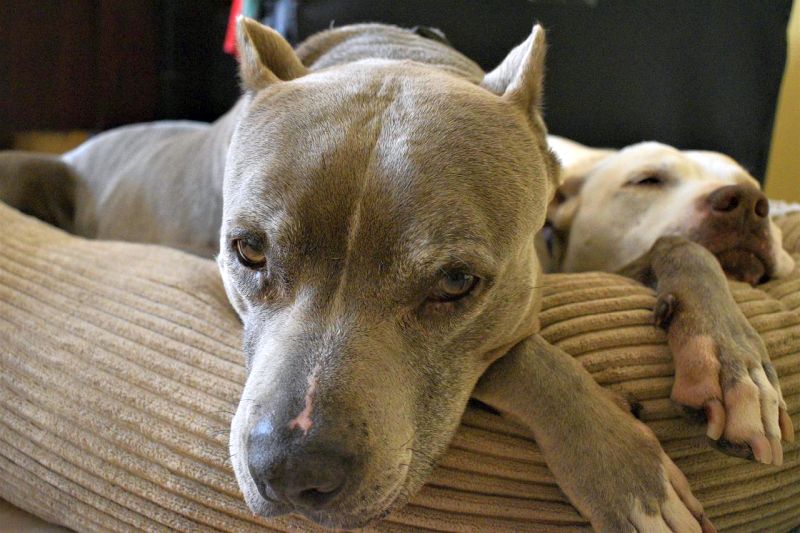
Look, we get it — your pit bull is simply precious, and she deserves to nom all of the delicious things.
But while the occasional treato is no problemo, you must avoid overfeeding your dog or allowing her to pack on the pounds. This is especially important for pit bulls as they are susceptible to several weight-related health problems.
For example, many pit bulls develop dysplasia of the hips or elbows, and this is most common among dogs who are overweight. Overweight pits may also develop things like pancreatitis or arthritis, so be sure to keep your pibble’s weight in the proper range.
Pit bulls also tend to have ravenous appetites, so you’ll want to measure your dog’s food carefully. Most adult pit bulls require somewhere between 800 and 1800 calories each day, but consult your veterinarian to determine your dog’s exact needs.
Watch Out For Food Gobbling!
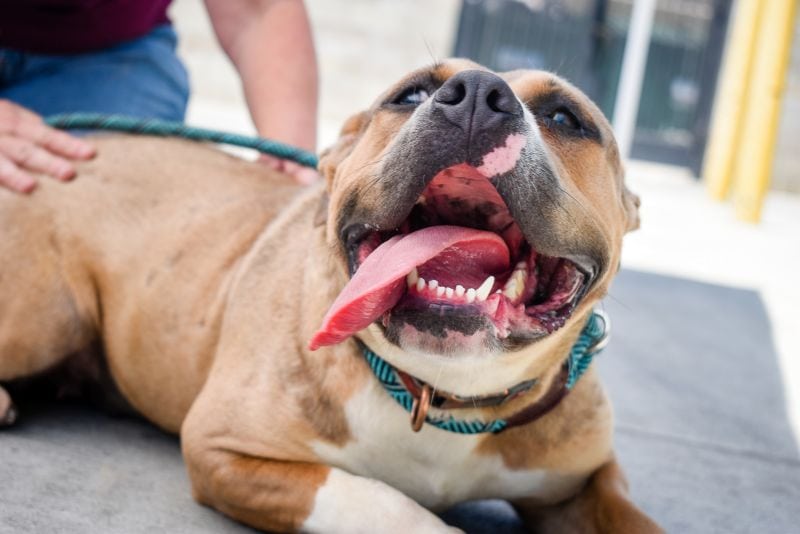
The gusto with which pit bulls feed can cause them to swallow significant quantities of air with their food.
In a best-case scenario, your dog will release this gas (cross your fingers the gas comes out the way it went in and not the alternative route), but in a worst-case scenario, your dog could develop bloat – a potentially deadly problem, in which air becomes trapped in your pet’s stomach.
To avoid these problems, try to offer your pit small meals (you may have to offer him one-half of her dog food at a time for each feeding) or opt for a food-dispensing feeding toy that makes your dog work for her kibble! You can also find slow-feeder dog bowls that should slow down your dog’s food scarfing.
Additionally, encourage your pup to lie down and relax for 15 to 20 minutes after eating, and discourage her from running around or playing immediately after eating.
Signs of a Superior Dog Food: Separating the Good from the Bad
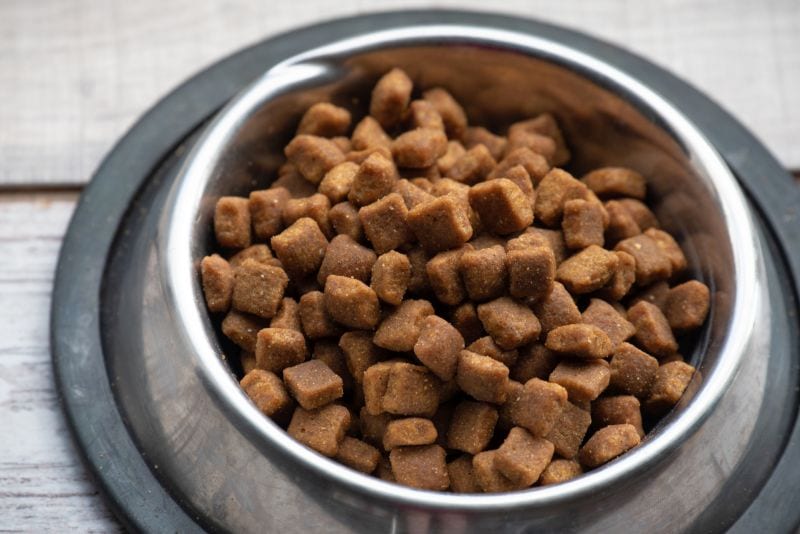
Most of the criteria that distinguish high-quality, healthy dog foods from low-quality products are easy to spot. Consider the following factors when selecting any dog food, and keep your pit bull’s needs in mind.
- Pick a dog food that meets or exceeds the AAFCO guidelines for your pet’s life stage. For example, if your pittie is still a puppy, you’ll want a food designed for “growth and reproduction,” while your adult doggo will need a food designed for “maintenance.”
- Make sure your dog’s food addresses any specific health issues she suffers from. For example, if your pooch has a sensitive stomach, you’ll want to pick a food that’s designed to be easy to digest.
- Look for dog foods with a whole protein as the first ingredient. While there’s nothing wrong with properly labelled meat meals, the use of a whole protein at the top of the ingredient list is a pretty good proxy for overall quality.
- Avoid products that contain unidentified meat meals. There is nothing wrong with dog food that contains “chicken meal,” but foods that include ingredients like “animal meal” or “meat meal” are not acceptable. The same principle holds true for other animal byproducts — select dog foods that identify the source.
- Pick a food containing probiotics. These belly-boosting microorganisms aid in healthy digestion and can restore balance to your dog’s gut flora. This delicate ecosystem is susceptible to illness and stress, so adding probiotics to your pup’s diet is a way to keep things moving in the right direction and ward off problems.
- Pay attention to omega fatty acids. Fatty acids nourish your four-footer’s skin and coat. Pit bulls often suffer from skin issues, making these nutrients absolute musts in their food. Fish oils are a great source of omega fatty acids and are frequently used in the best dry dog foods today.
- Opt for foods that have antioxidant-rich ingredients (such as most brightly colored fruits and veggies). Antioxidants will help ensure proper immune function to help your pittie stay healthy.
- Look for dog foods that are manufactured in the United States, Canada, Western Europe, New Zealand, or Australia, rather than countries without strict food-safety controls in place.
- Try to avoid dog foods with artificial flavors, colors, and preservatives. “All natural” dog foods are not necessarily better than others (after all, cyanide, spider venom, and plutonium are all perfectly natural, yet dangerous to people and pups), but it is wise to avoid unnecessary artificial flavors or other additives. Pitties are prone to allergies and food insensitivities, so it’s best to skip the ick altogether to avoid issues.
Best Dog Food For Pit Bulls: Our Top Picks
We’ve put together a list of some of the best dog food for pit bulls. Any of the following dog food products should keep your pit bull healthy and happy. Just be sure to check the ingredients listed and select the best product for your pup.
1. Nom Nom
Get 50% off with K9 of Mine
About: Nom Nom is a fresh food option customized to your dog, ensuring she won’t go hungry or pack on extra pounds. Real meat is always the first ingredient, and its meaty ground texture is a hit, even with the pickiest pittie palates.
Features:
- All recipes formulated by a board-certified veterinary nutritionist
- Gentle cooking process preserves nutrients and flavor
- Exceeds AAFCO standards for all life stages
- Made in the USA with only US-sourced ingredients
Options: Offered in Beef Mash, Chicken Cuisine, Pork Potluck, and Turkey Fare.
Ingredients (Turkey Fare Recipe):
Ingredients List
Ground turkey, Brown rice, Eggs, Carrots, Spinach...,
Dicalcium phosphate, Calcium carbonate, Citric acid, Potassium chloride, Salt, Water sufficient for processing, Fish oil, Choline bitartrate, Natural flavor, Vinegar, Iron amino acid chelate, Taurine, Zinc gluconate, Vitamin E supplement, Copper gluconate, Niacin, Manganese gluconate, Vitamin A supplement, Thiamine mononitrate, Pyridoxine hydrochloride, Riboflavin, Cholecalciferol (source of vitamin D3), Potassium iodide, Folic acid, Vitamin B12 supplement
Pros
- Most dogs love the taste and texture of this fresh, meaty mash
- Customization ensures the right portion for your pooch (avoiding extra pibble pounds!)
- Sample option lets you try Nom Nom before committing to a subscription
Cons
- Requires refrigeration, so you’ll need to sacrifice some fridge and freezer space
- Unfortunately, premium ingredients come at a premium price
Nom Nom and other custom dog foods are almost always the best choice, as they’re fine-tuned to suit your dog’s specific needs, including her activity levels. They’re absolute game-changers for pups with sensitive systems too.
2. Blue Buffalo Life Protection Formula
About: Blue Buffalo Life Protection Formula is a great all-around choice for most pit bulls, as it always features meat as the first ingredient and contains a mix of grains, fruits, and vegetables for snout-to-tail health. Its whole, lean proteins nourish your pittie’s mighty muscles while added healthy fats keep her coat and skin looking and feeling their best.
Features:
- Made without common sensitivity triggers like corn, soy, or wheat
- Probiotic mix keeps doggy digestive systems moving in the right direction
- LifeSource Bits pack a punch of antioxidants for immune health
- Made in the USA
Options: Available in six recipes, including Chicken & Brown Rice, Beef & Brown Rice, Healthy Weight Chicken & Brown Rice, Lamb & Brown Rice, Fish & Brown Rice, and Small Bite Chicken & Brown Rice.
Ingredients (Chicken & Brown Rice):
Ingredients List
Deboned chicken, Chicken meal, Brown rice, Barley, Oatmeal, Pea starch...,
Flaxseed (source of Omega 3 & 6 fatty acids), Chicken fat (preserved with mixed tocopherols), Natural flavor, Dried tomato pomace, Peas, Pea protein, Salt, Potassium chloride, Direct dehydrated alfalfa pellets, Dried chicory root, Potatoes, Pea fiber, Alfalfa nutrient concentrate, Calcium carbonate, Choline chloride, DL-Methionine, Mixed tocopherols, Dicalcium phosphate, Sweet potatoes, Carrots, Garlic, Zinc amino acid chelate, Zinc sulfate, Vegetable juice for color, Ferrous sulfate, Vitamin E supplement, Iron amino acid chelate, Blueberries, Cranberries, Barley grass, Parsley, Turmeric, Dried kelp, Yucca schidigera extract, Niacin, Glucosamine hydrochloride, Calcium pantothenate, Copper sulfate, Biotin, L-Ascorbyl-2-Polyphosphate, L-Lysine, L-Carnitine, Vitamin A supplement, Copper amino acid chelate, Manganese sulfate, Taurine, Manganese amino acid chelate, Thiamine mononitrate, Riboflavin, Vitamin D3 supplement, Vitamin B12 supplement, Pyridoxine hydrochloride, Calcium iodate, Dried yeast, Dried Enterococcus faecium fermentation product, Dried Lactobacillus acidophilus fermentation product, Dried Aspergillus niger fermentation extract, Dried Trichoderma longibrachiatum fermentation extract, Dried Bacillus subtilis fermentation extract, Folic acid, Sodium selenite, Rosemary oil
Pros
- Pup-pleasing taste to most canines
- Fair amount of recipes to choose from, giving your pittie options
- Probiotics are a win for sensitive tummies
Cons
- Peas aren’t an ideal ingredient in the eyes of some pet parents
- LifeSource Bits aren’t a hit with pickier pups
3. Canidae All Life Stages
About: CANIDAE All Life Stages is an excellent canned food for pit bull families, particularly those with multiple dogs, as this veterinarian-designed, all-life-stages formula suits puppies to seniors. Serve on its own or add to your pibble’s kibble for a delicious dose of extra flavor and calories.
Features:
- Real meat is always the first ingredient
- One of the relatively few grain-inclusive canned options
- Doesn’t include any corn, soy, wheat, or by-products
- Made in the USA
Options: Offered in 4 recipes, including Chicken & Rice, Less Active Formula, Multi-Protein Formula, and Lamb & Rice.
Ingredients (Lamb & Rice Recipe):
Ingredients List
Lamb, Lamb broth, Vegetable broth, Lamb liver, Ocean fish...,
Brown rice, Peas, Dried egg product, Sodium tripolyphosphate, Calcium carbonate, Canola oil, Sunflower oil, Potassium chloride, Salt, Agar-agar, Choline chloride, Salmon oil (Preserved with mixed tocopherols), Dried kelp, Dried cranberries, Yucca schidigera extract, Vitamin E supplement, Zinc sulfate, Niacin supplement, Ferrous sulfate, Thiamine mononitrate, Zinc proteinate, Manganese sulfate, Vitamin A supplement, L-Ascorbyl-2-Polyphosphate, Iron proteinate, d-Calcium pantothenate, Copper sulfate, Pyridoxine hydrochloride, Manganese proteinate, Potassium iodide, Riboflavin supplement, Copper proteinate, Folic acid, Vitamin D3 supplement, Cobalt proteinate, Sodium selenite, Biotin, Vitamin B12 supplement, Rosemary extract
Pros
- Pate texture is a pup palate-pleaser (also mixes fabulously into kibble!)
- Veterinarian-designed recipe includes nutrient-rich organ meat
- One of the relatively few grain-inclusive canned options
- Great option for multi-dog families
Cons
- Some dogs prefer gravy-based, stew-style canned foods
- Mixed-protein recipes can be an issue for pit bulls with sensitivities
4. Diamond Naturals
About: Diamond Naturals lets you save your pet-care pennies for other things your pibble needs while still containing the quality ingredients your pit needs. Available in an assortment of recipes, including one made specifically for skin health, there’s a Diamond Naturals for almost every pit bull’s needs.
Features:
- Fruits and vegetables provide a boost of natural fiber and antioxidants
- Added probiotics support canine digestion and regularity
- Fatty acids nourish skin and coat (an area of concern for many pitties)
- Made in the USA
Options: Available in 16 recipes, including Chicken & Rice, Lamb Meal & Rice, Skin & Coat, Light, and more. Grain-free recipes are also offered.
Ingredients (Lamb Meal & Rice Recipe):
Ingredients List
Lamb meal, Ground white rice, Cracked pearled barley, Grain sorghum...,
Egg product, Dried yeast, Rice bran, Chicken fat (Preserved With mixed tocopherols), Oatmeal, Dried beet pulp, Natural flavor, Flaxseed, Potassium chloride, Salt, Dl-Methionine, Choline chloride, Taurine, Dried chicory root, Kale, Chia seed, Pumpkin, Blueberries, Oranges, Quinoa, Dried kelp, Coconut, Spinach, Carrots, Papaya, Yucca schidigera extract, L-Carnitine, Dried Lactobacillus plantarum fermentation product, Dried Bacillus subtilis fermentation product, Dried Lactobacillus acidophilus fermentation product, Dried Enterococcus faecium fermentation product, Dried Bifidobacterium animalis fermentation product, Vitamin E supplement, Beta carotene, Iron proteinate, Zinc proteinate, Copper proteinate, Ferrous sulfate, Zinc sulfate, Manganese sulfate, Copper sulfate, Potassium iodide, Thiamine mononitrate, Manganese proteinate, Ascorbic acid, Vitamin A supplement, Biotin, Niacin, Calcium pantothenate, Sodium selenite, Pyridoxine hydrochloride, Vitamin B12 supplement, Riboflavin, Vitamin D3 supplement, Folic acid
Pros
- Won’t break your budget despite featuring probiotics and other bonuses
- Excellent selection of recipes, including various proteins
- Large bag options offer additional savings (and less store runs!)
Cons
- Picky eaters may need a tastier food (or a delicious topper)
- A few exotic protein options would be nice
5. Taste of the Wild
About: Taste of the Wild offers a number of grain-free recipes centered around quality proteins. Added prebiotics and probiotics support healthy digestion, while fruits and vegetables provide antioxidants and fiber for immune health and satiation.
Features:
- Real meat is always the top ingredient
- Fatty acid blend nurtures your pup’s skin and coat from the inside out
- Doesn’t contain grain, corn, or wheat
- Made in the USA
Options: Available in 9 recipes, including High Prairie (mixed protein,) Sierra Mountain (lamb-based,) and Southwest Canyon (boar-based.) Also offered in limited-ingredient and grain-inclusive recipes.
Ingredients (High Prairie Recipe):
Ingredients List
Water buffalo, Lamb meal, Chicken meal, Sweet potatoes, Peas...,
Potatoes, Chicken fat, Egg product, Roasted bison, Roasted venison, Beef, Natural flavor, Tomato pomace, Potato protein, Pea protein, Ocean fish meal, Salt, Choline chloride, Taurine, Dried chicory root, Tomatoes, Blueberries, Raspberries, Yucca schidigera extract, Dried Lactobacillus plantarum fermentation product, Dried Bacillus subtilis fermentation product, Dried Lactobacillus acidophilus fermentation product, Dried Enterococcus faecium fermentation product, Dried Bifidobacterium animalis fermentation product, Vitamin E supplement, Iron proteinate, Zinc proteinate, Copper proteinate, Ferrous sulfate, Zinc sulfate, Manganese sulfate, Copper sulfate, Potassium iodide, Thiamine mononitrate, Manganese proteinate, Ascorbic acid, Vitamin A supplement, Biotin, Niacin, Calcium pantothenate, Sodium selenite, Pyridoxine hydrochloride, Vitamin B12 supplement, Riboflavin, Vitamin D3 supplement, Folic acid
Pros
- Most dogs love the meaty taste
- Available in a wide mix of proteins, including exotic offerings like wild boar
- Added probiotics provide a belly boost
Cons
- Can be too rich for some pup’s tummies to handle
- Mixed-protein recipes aren’t ideal for pit bulls with food sensitivities
Grain-free recipes were all the craze for a while thanks to clever marketing, but the truth is, he vast majority of dogs digest cooked grains perfectly well. Obviously, this isn’t the case for canines with grain sensitivities, but it’s something to be aware of.
Point being, most dogs do not need a grain-free diet. In fact, there is some evidence that grain-free diets may even be harmful.
Researchers have discovered a correlation between grain-free dog foods and dilated cardiomyopathy (DCM) in dogs. DCM is a serious heart condition that can lead to death in some four-footers.
Now, more research is needed — we don’t yet know that grain-free diets cause DCM. But in the meantime, it is important to discuss your food choice with your vet — especially if your pooch is a breed prone to heart issues like DCM.
6. Nutro Ultra Puppy
About: Nutro Ultra Puppy features calcium for bone health and a trio of protein sources for muscle development, making it a top-notch puppy food for pit bulls. Also containing a superfood medley of real fruits and vegetables, this food is also rich in antioxidants and fiber.
Features:
- Real meat is the first ingredient
- Omega-3 fatty acids aid in coat health and eye development
- Contains a healthy mix of grains
- Made in the USA
Options: Available in Ultra Puppy and Ultra Large Breed Puppy.
Ingredients (Ultra Puppy Recipe):
Ingredients List
Chicken, Chicken meal (source of glucosamine and chondroitin), Whole grain barley...,
Whole grain oats, Whole grain brown rice, Chicken fat (preserved with mixed tocopherols), Dried plain beet pulp, Whole grain sorghum, Potato protein, Natural flavors, Lamb meal, Salmon meal, Whole Flaxseed, Pea Protein, Fish Oil (preserved with Mixed Tocopherols), Potassium Chloride, Salt, Choline Chloride, Citric Acid, Mixed Tocopherols (preservative), Dried Coconut, Whole Chia Seed, Dried Egg Product, Tomato Pomace, Dried Kale, Dried Pumpkin, Dried Spinach, Dried Blueberries, Dried Apples, Dried Carrots, , DL-Methionine, Vitamin E Supplement, Ferrous Sulfate, Zinc Oxide, Sodium Selenite, Ascorbic Acid (Vitamin C), D-Calcium Pantothenate, Manganese Sulfate, Copper Sulfate, Biotin, Thiamine mononitrate, Vitamin B12 supplement, Vitamin A supplement, Niacin supplement, Riboflavin supplement, Pyridoxine hydrochloride, Vitamin D3 supplement, Manganous oxide, Potassium iodide, Folic acid, Rosemary extract
Pros
- Made with a fantastic mix of premium ingredients, including real meat and vegetables
- Grain-inclusive recipe fuels puppies (and keeps them full!)
- Kibble size is perfect for pupper mouths
Cons
- Mixed-protein recipes aren’t the best foods for dogs with sensitive systems
- More expensive than other kibble options
7. Nutro Natural Choice Senior
About: Nutro Natural Choice Senior is formulated with mature dogs in mind, featuring glucosamine and chondroitin for joint support and calcium for bone health. Real meat is always the first ingredient, and added antioxidants boost your senior pibble’s immune system.
Features:
- Made with non-GMO ingredients and no corn, soy, or wheat
- Natural fiber keeps bellies satiated and digestive systems running in tip-top shape
- Small kibble shape is easy for senior dogs to crunch and munch
- Made in the USA
Options: Available in Lamb & Brown Rice, Chicken & Brown Rice, Small Breed Chicken & Brown Rice, and Large Breed Chicken & Brown Rice.
Ingredients (Lamb & Brown Rice Recipe):
Ingredients List
Deboned Lamb, Chicken Meal (source of Glucosamine and Chondroitin Sulfate)...,
Rice Bran, Split Peas, Brewers Rice, Whole Grain Barley, Whole Grain Brown Rice, Chicken Fat (preserved with Mixed Tocopherols), Natural Flavor, Dried Plain Beet Pulp, Fish Oil (preserved with Mixed Tocopherols), Choline Chloride, Potassium Chloride, Citric Acid (preservative), Mixed Tocopherols (preservative), Chia Seed, Dried Coconut, Dried Tomato Pomace, Dried Egg Product, Dried Pumpkin, Dried Kale, Dried Spinach, DL-Methionine, Salt, Vitamin E Supplement, Ferrous Sulfate, Zinc Oxide, Sodium Selenite, Ascorbic Acid (Vitamin C), D-Calcium Pantothenate, Manganese Sulfate, Copper Sulfate, Biotin, Thiamine Mononitrate (Vitamin B1), Vitamin B12 Supplement, Vitamin A Supplement, Niacin Supplement, Riboflavin Supplement (Vitamin B2), Pyridoxine Hydrochloride (Vitamin B6), Vitamin D3 Supplement, Manganous Oxide, Potassium Iodide, Folic Acid, Rosemary Extract
Pros
- Contains glucosamine and chondroitin for joint health (a major concern for senior canines)
- Made with a great mixture of protein, grains, and nutrient-rich produce
- Pricing is reasonable for such a high-quality kibble
Cons
- Some recipes feature mixed proteins, which can be a problem for pibbles with sensitive systems
- More protein options would be ideal
8. Zignature Select Cuts
A limited-ingredient dry food that’s rich in protein and healthy fats while lacking common triggers.
About: Zignature Select Cuts is a premium kibble that makes avoiding your pit bull’s sensitivity triggers easier with its short ingredient list. Protein-rich, it also contains healthy fats for coat health and grains for proper digestive function and plenty of energy.
Features:
- Always features quality protein as the first ingredient
- Grain-inclusive kibble with non-GMO millet and oats
- Doesn’t contain any chicken, legumes, or potatoes
- Made in the USA
Options: Select Cuts is offered in Turkey Formula, Lamb & Lamb Meal Formula, and Trout & Salmon Formula. Grain-free offerings are also available with exotic proteins like kangaroo and pork under the Zignature Grain-free line.
Ingredients (Lamb & Lamb Meal Recipe):
Ingredients List
Lamb, Lamb meal, Oats, Millet, Sunflower meal, Flaxseed...,
Natural flavors, Sunflower oil, Quinoa, Potassium chloride, Choline chloride, Salt, Vitamin A supplement, Vitamin D3 supplement, Vitamin E supplement, Niacin supplement, D-calcium pantothenate, Thiamine mononitrate, Pyridoxine hydrochloride, Riboflavin supplement, Folic acid, Biotin, Vitamin B12 supplement, Calcium carbonate, DL-methionine, Taurine, Dried kelp, Zinc proteinate, Iron proteinate, Copper proteinate, Cobalt proteinate, Manganese proteinate, Calcium iodate, Sodium selenite, L-Carnitine, Mixed tocopherols
Pros
- Limit-ingredient recipe ideal for pitties with food restrictions
- Excellent selection of proteins, including exotic meats
- One of the few grain-inclusive limited-ingredient kibbles
Cons
- On the expensive side
- Picky pooches may not love the taste
9. Wellness Complete Healthy Weight
About: Made with fewer calories, Wellness Complete Healthy Weight is grain-inclusive dry food that keeps your pit bull satisfied without packing on pounds. Whole protein promotes lean muscle development, while a balanced blend of produce and grains offer sustained energy.
Features:
- Real, deboned chicken is the first ingredient
- Probiotic blend for digestive regularity
- Balanced mix of fruits and vegetables for fiber and antioxidants
- Made in the USA
Options: Available in 14 recipes, including Healthy Weight, Small Breed Healthy Weight, and Adult Chicken.
Ingredients (Healthy Weight Recipe):
Ingredients List
Deboned chicken, Chicken meal, Oatmeal, Ground brown rice, Ground barley...,
Peas, Tomato pomace, Rice, Ground flaxseed, Tomatoes, Chicken fat, Carrots, Natural chicken flavor, Potassium chloride, Choline chloride, Spinach, Vitamin E supplement, Taurine, Zinc proteinate, Mixed tocopherols, Sweet potatoes, Apples, Blueberries, Zinc sulfate, Calcium carbonate, Niacin, Ferrous sulfate, Iron proteinate, Vitamin A supplement, Glucosamine hydrochloride, Chondroitin sulfate, Ascorbic acid, Copper sulfate, Thiamine mononitrate, Copper proteinate, Chicory root extract, Manganese proteinate, Manganese sulfate, d-Calcium pantothenate, Sodium selenite, Pyridoxine hydrochloride, Riboflavin, Yucca schidigera extract, Garlic powder, Vitamin D3 supplement, Biotin, Calcium iodate, Vitamin B12 supplement, Folic acid, Dried Lactobacillus plantarum fermentation product, Dried Enterococcus faecium fermentation product, Dried Lactobacillus casei fermentation product, Dried Lactobacillus acidophilus fermentation product, Rosemary extract, Green tea extract, Spearmint extract
Pros
- Lower calorie recipe makes slimming your pibble down easier
- Flavor gets a paw’s up from pups
- Probiotic mix supports digestive health
Cons
- More protein options would be ideal
- It’s a pretty expensive kibble
10. Sundays Food for Dogs
About: Sundays is a dream dog food for sensitive tummies thanks to its short list of ingredients. Vet formulated, this all-life-stages food is made with human-grade ingredients using a gentle air-drying process to preserve the food’s top-notch taste.
Features:
- Made with real meat, including organ and ground bone
- Fiber-rich vegetables aid in digestion
- Air-dried formula doesn’t require refrigeration
- Made in the USA at a human-grade facility
Options: Offered in Beef and Chicken recipes.
Ingredients (Chicken Recipe):
Ingredients List
Chicken, Chicken liver, Eggs, Millet, Oat, Pumpkin, Kale, Ground bone...,
Fish oil, Sea salt, Flaxseed, Parsley, Turmeric, Chicory root, Kelp, Mixed tocopherols, Ginger, Blueberries, Carrots, Apples, Tomatoes, Shiitake mushrooms, Broccoli, Oranges, Cranberries, Spinach, Beets, Tart cherries, Strawberries
Pros
- Limited-ingredient nature makes avoiding trigger foods easy
- Most dogs love the taste and treat-like texture
- Doesn’t require refrigeration
Cons
- Pricier than off-the-shelf kibble
- More protein options would be ideal (particularly exotic offerings)
11. Blue Buffalo True Solutions Jolly Joints
Glucosamine and chondroitin team up with healthy fats to keep your pibble's joints moving and grooving with this kibble.
About: Blue Buffalo True Solutions Jolly Joints is a joint-supportive food made with 700 milligrams of glucosamine and 350 milligrams of chondroitin per kilogram to support your pittie’s frame. A probiotic blend helps with canine digestion, while vitamins E and C offer an immunity boost.
Features:
- Real deboned chicken is the top ingredient
- Grain-inclusive recipe uses oatmeal, brown rice, and barley as primary carbohydrate sources
- Fish oil aid in skin and coat health
- Made in the USA with globally sourced ingredients
Options: Available in a single chicken-based recipe.
Ingredients:
Ingredients List
Deboned Chicken, Chicken Meal, Oatmeal, Brown Rice, Barley,...,
Natural Flavor, Dried Tomato Pomace, Flaxseed (source of Omega 3 Fatty Acids), Dried Plain Beet Pulp, Potatoes, Canola Oil (source of Omega 6 Fatty Acids), Fish Oil (source of EPA-Eicosapentaenoic Acid), Peas, Shrimp Meal (source of Glucosamine and Chondroitin Sulfate), Pea Protein, Dried Egg Product, Dehydrated Alfalfa Meal, Potassium Chloride, Dried Chicory Root, Pea Fiber, Alfalfa Nutrient Concentrate, Calcium Carbonate, Salt, Choline Chloride, Taurine, Vitamin E Supplement, Sweet Potatoes, Carrots, preserved with Mixed Tocopherols, DL-Methionine, L-Ascorbyl-2-Polyphosphate (source of Vitamin C), L-Tryptophan, Garlic, L-Carnitine, L-Threonine, Zinc Amino Acid Chelate, Zinc Sulfate, Vegetable Juice for color, Ferrous Sulfate, Iron Amino Acid Chelate, Blueberries, Cranberries, Barley Grass, Parsley, Turmeric, Dried Kelp, Yucca Schidigera Extract, Niacin (Vitamin B3), Calcium Pantothenate (Vitamin B5), L-Lysine, Copper Sulfate, Biotin (Vitamin B7), Vitamin A Supplement, Copper Amino Acid Chelate, Manganese Sulfate, Chondroitin Sulfate, Manganese Amino Acid Chelate, Thiamine Mononitrate (Vitamin B1), Riboflavin (Vitamin B2), Vitamin D3 Supplement, Vitamin B12 Supplement, Pyridoxine Hydrochloride (Vitamin B6), Calcium Iodate, Dried Yeast, Dried Enterococcus faecium fermentation product, Dried Lactobacillus acidophilus fermentation product, Dried Aspergillus niger fermentation extract, Dried Trichoderma longibrachiatum fermentation extract, Dried Bacillus subtilis fermentation extract, Folic Acid (Vitamin B9), Sodium Selenite, Oil of Rosemary
Pros
- Great source of joint-supporting glucosamine and chondroitin
- Probiotics give your pittie’s digestive system a boost
- Contains a fair mix of fruits and vegetables
Cons
- Some dogs dislike the LifeSource Bits
- More protein options are needed for dogs who need chicken-free food
12. A Pup Above
Take $50 off your order with code K950 at checkout!
About: A Pup Above is a tasty meat mixture made with human-grade ingredients in a scrumptious gravy featuring bone broth, which may benefit bone and GI health. Best of all, the single-protein recipes aren’t a mile long, making it easy to avoid food triggers.
Features:
- Can be fed on its own or used as a tasty topper to entice picky pit bulls
- Gentle cooking methods protect nutrients and flavor
- Grain-free and grain-inclusive recipes are available
- Made in the USA in a USDA-inspected facility
Options: Available in 4 recipes, including Chicka Chicka Bow Wow, Porky Luau, Texas Beef Stew, and Turkey Pawella. Sampler is also available.
Ingredients (Texas Beef Stew Recipe):
Ingredients List
Beef, Beef liver, Russet potatoes, Tomatoes, Beef bone broth,...,
Carrots, Green peas, Safflower oil, Turmeric, Thyme, Parsley, Dicalcium phosphate, Calcium carbonate, Potassium chloride, Sodium bicarbonate, Magnesium oxide, Zinc amino acid chelate, Iron amino acid chelate, Copper amino acid chelate, Manganese amino acid chelate, Potassium iodide, Sodium selenite, Vitamin D3 supplement, Vitamin E supplement
Pros
- Most dogs go crazy for the taste
- Single-protein recipes are great for dogs with sensitivities
- Eco-friendly company practices green concepts like 100-percent recycled packaging
Cons
- Requires refrigeration
- As with any fresh option, it’s pricey
13. Bully Max
About: Maintain your pittie Olympian’s physique with Bully Max, a protein-rich kibble with 535 calories per cup. This chicken-based recipe is suitable for all life stages, including pit puppies.
Features:
- Contain a respectable 30% protein
- Made without corn, soy, or wheat
- Grain-inclusive recipe provides fiber and energy
- Made in the USA
Options: Offered in Bully Max 30/20 Recipe and Bully Max Pro 31/25 Recipe.
Ingredients (Bully Max 30/20 Recipe):
Ingredients List
Chicken meaI, Brown rice, Chicken fat (Preserved with mixed tocopherols)...,
Dried plain beet pulp, Ground grain sorghum, PearIed barley, Brewers dried yeast, WhoIe ground flaxseed, Menhaden fish meal, Egg product, Natural flavor, Menhaden fish oiI, Potassium chloride, Salt, L-Lysine, DL-Methionine, Lactobacillus acidophilus fermentation product dehydrated, Propionic acid, Vitamin E supplement, Ascorbic acid, Niacin supplement, Organic dried kelp, d-Calcium pantothenate, Riboflavin supplement, Biotin, Vitamin B12 supplement, Thiamine mononitrate, Vitamin A acetate, Pyridoxine hydrochloride, Citric acid, Vitamin D3 supplement, Folic acid, Iron sulfate, Zinc sulfate, Zinc proteinate, Iron proteinate, Copper sulfate, Zinc oxide, Manganese sulfate, Manganese proteinate, Copper proteinate, Manganous oxide, Sodium selenite, Calcium iodate
Pros
- Excellent choice for super-athletic pits needing to gain or maintain weight
- Dogs give the taste a tail wag of approval
- High-calorie recipe offers more bang for your buck per cup
Cons
- Lack of protein options is a bummer (not every pit can handle chicken, sadly!)
- Pretty expensive compared to other kibbles
Choosing Between Grain-Free and Grain-Inclusive Food

Unfortunately, the dog world isn’t immune to trends, and the grain-free train is one that rocked the dog food aisle and brought countless new products with it. Despite clever marketing, the fact is, most dogs digest cooked grains just fine. Grains are an excellent source of essential vitamins and minerals and are rich in fiber, aiding in digestion.
That said, dogs with grain allergies require grain-free food. A vet diagnoses these allergies and addresses them accordingly, whether it’s by recommending a limited-ingredient diet or hypoallergenic food. Never try to self-diagnose or self-treat a food allergy. It’s important to rule out other potential causes.
Signs of a grain allergy in your dog include:
- Itchy skin, particularly around the ears and paws
- Excessive paw or tail licking and chewing
- Hair loss
- Chronic ear infections
- Unexplained skin issues
- Wheezing
- Coughing
More commonly, pet owners confuse a food intolerance for a food allergy. While they sound similar, they’re quite different. A food allergy involves an immune response and is generally seen as a skin reaction, while a food intolerance typically involves digestive upset, such as noxious gas or diarrhea. Some allergies do cause stomach problems, but skin issues are most common.
With pit bulls frequently suffering from both skin issues and notoriously foul flatulence, this makes investigating potential causes with your vet all the more important.
Another major factor to consider is the link between grain-free dog foods and a serious heart condition called canine dilated cardiomyopathy, detailed in a 2019 FDA investigation. Pit bulls aren’t as prone to DCM as some other breeds, but they are susceptible to heart issues. For this reason alone, always consult your vet before switching your pit bull to grain-free food.
Dog Food Type: Dry, Wet, Fresh, and Beyond
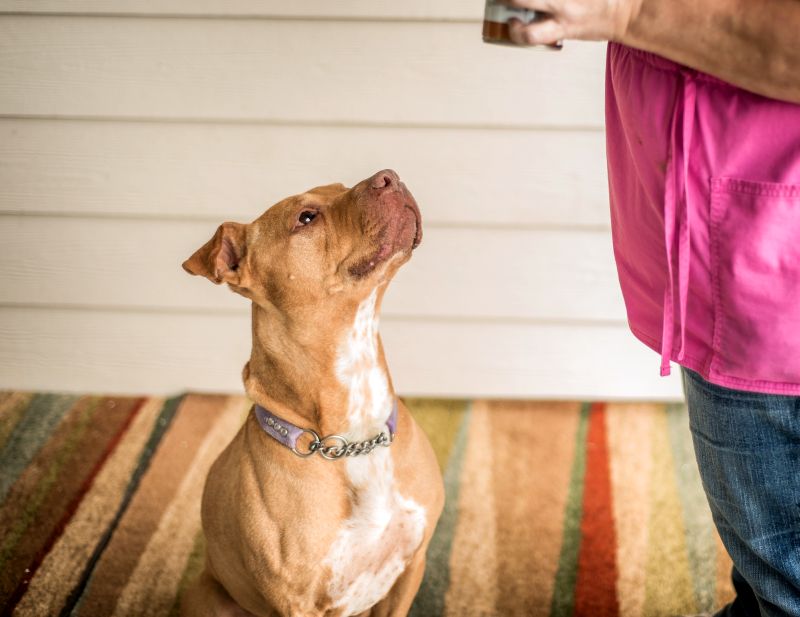
Dog food comes in all sorts of forms today, which can make selecting the right one for your pit bull even trickier. Each has its own pros and cons to consider.
Dry Dog Food
The most common type of dog food is dry kibble. This crunchy product has a decent shelf life and is packaged in bags that may or may not be resealable, making storage relatively easy. It’s also the most affordable dog food option and comes in countless formulas and recipes. The texture helps clean your pit’s teeth as she chews, too. Unfortunately, kibble is also the least tasty dog food option, and it can be hard to get picky pitties to give it a try.
Wet Dog Food
Wet dog food is generally packaged in cans or tubs and may be a pate or stew texture. Like dry dog food, wet food is generally packaged in cans or tubs and comes in a pate or stew texture. It has a relatively long shelf life like dry dog food but requires refrigeration after opening. It’s pricey to feed an exclusively wet diet, however. It’s also rather messy and can be too rich for some dogs’ systems, leading to gas and diarrhea. While delicious, wet food doesn’t have much texture either, so it won’t help clean your canine’s chompers. Many pup parents opt to use wet dog food as a topper to kibble.
Fresh Dog Food
The newest form of dog food on the market is fresh dog food, and it’s incredible. Not only are the meat-forward recipes delicious, but they’re also made with top-notch ingredients that are often human-grade, including premium meats and fresh vegetables. Many are also customized to your dog, aiding in weight maintenance and addressing health concerns. Unfortunately, fresh dog food is expensive and requires refrigeration. A great way to get the benefits of fresh dog food for less is to use it as a meal topper or occasional treat.
In addition to the criteria listed above, you’ll always want to make sure to check in with your vet regarding your dog’s food.
Veterinarians are not only educated in the subject of canine nutrition, but they also know the ins and outs of your dog’s health. This makes them your most valuable resource in the quest for a perfect pit bull food!
Common Pit Bull Health Issues

Pit bulls are a hardy breed known for toughing out aches and pains, but they have some health issues to watch for. Many of these can be affected by diet, making selecting the right food for your pit bull all the more important for lifelong wellness.
The most common health concerns for pit bulls are:
- Allergies
- Cataracts
- Skin issues
- Congenital heart defects
- Hip dysplasia
- Luxating patella
Some are more avoidable than others, obviously, but feeding your pit a high-quality diet and helping her maintain a healthy weight go a long way in preventing unnecessary wear and tear on her body.
Keep An Eye Out For Dog Food Allergies: A Common Pibble Problem
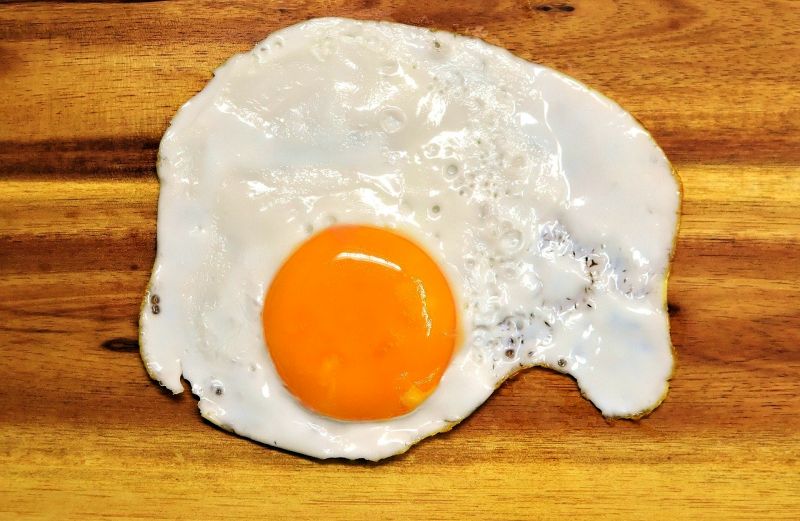
Food allergies are also a common problem among pit bulls, so many owners like to use dog foods that avoid many of the most common allergens, including beef, chicken, soy, dairy products and eggs. Instead, many owners look for unusual (often called “novel”) proteins, such as venison or salmon.
However, there is nothing wrong with offering chicken or other common triggers if your dog has never been diagnosed with food allergies.
If your pittie is suffering from red, irritated skin, or incessant paw licking, you should probably make an appointment with your vet and explore the possibility that your pibble has some food allergies.
But in the meantime, you may want to consider experimenting with limited ingredient dog foods or hypoallergenic dog foods. These foods contain fewer ingredients than usual and often only have a single protein source, allowing you to narrow down the potential food ingredients that could be causing your pup’s problems.
Pit Bull Puppies vs Adults: How to Feed Them

Pit bull puppies should be fed three times a day, but adults can be fed twice daily – once in the morning and once at night. Additionally, because puppies have unique dietary needs that differ from those of adults, you should select a suitable puppy food for young dogs.
You can switch your puppy to adult dog food once he is about 80% to 90% of his final size. Just make sure that you do so gradually, by mixing in an increasing amount of the adult dog food with the puppy food over the course of a week or two.
What Is a “Pit Bull,” and Is It “Pit Bull” or “Pitbull?”
There is a ton of confusion and conflicting information about the term “pit bull,” so we’ll try to shed some light on the issue here.
Technically speaking, neither the term “pit bull” nor “pitbull” refer to a specific breed; instead, they are used (somewhat incorrectly) to refer to a handful of different bully breeds.
These blocky-headed doggos tend to share the same overall build, with a large head, wider muzzle, and muscular frame. Since they look similar, people tend to lump them together, though they’re distinct breeds with differing needs.
You’ll often see pit bull written as one word — pitbull. And while neither version refers to a specific breed, the term is best written in split fashion, as two different words.
American Pit Bull Terrier

These natural-born athletes stand between 17 and 21 inches at the withers and weigh between 35 and 60 pounds. This true “pit bull” is fairly active, though she won’t refuse a nap on your couch. Nutritionally, APBTs may struggle to maintain weight, with high-energy dogs burning through calories rapidly while couch potatoes may pile on pounds. They’re also prone to allergies, which can be linked to food.
Staffordshire Bull Terrier

This “smiling” sweetheart has a wider head than the APBT and a stockier build, standing between 14 and 16 inches at the shoulder and weighing up to 38 pounds. Like APBTs, this breed is prone to joint issues and skin allergies that can be impacted by their diet. Compared to APBTs, Staffordshires tend to gain unnecessary weight, as they aren’t as active.
American Staffordshire Bull Terrier
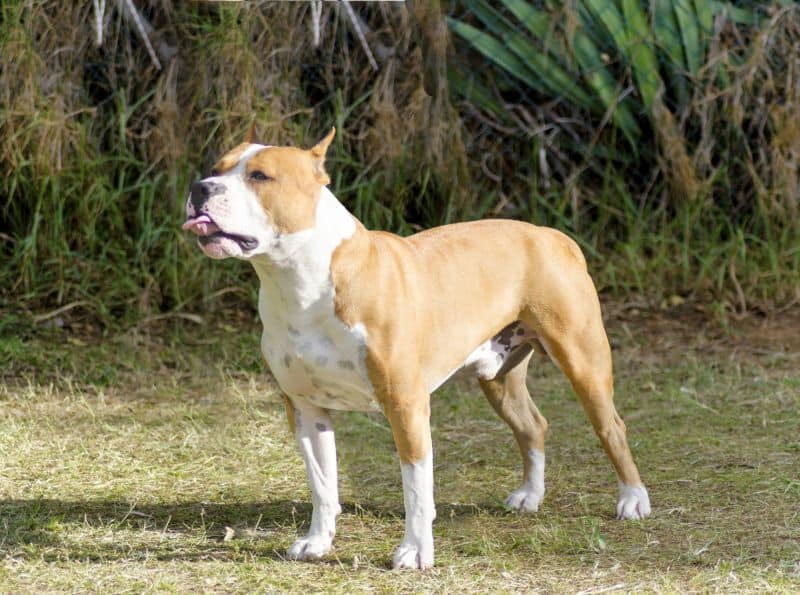
Also known as the AmStaff, this breed stands up to 19 inches at the shoulder and weighs up to 70 pounds. AmStaffs have a slightly wider head than APBTs and may outweigh them. Like APBTs, they’re an athletic breed, and their major health concerns include skin issues, heart disease, and hip dysplasia, all of which can be affected by their diet. Those weighing 70 pounds or more may require large-breed food as a puppy and as an adult.
American Bulldog

Unlike APBTs, American bulldogs are a large breed, as adults are up to 25 inches at the shoulder and may weigh up to 100 pounds. Therefore, they require a good food for their breed. This means picking a large-breed puppy food when your pooch is a youngster and switching to a large-breed adult food once he’s all grown up. Most major health concerns for the breed are joint-related, including hip dysplasia.
American Bully
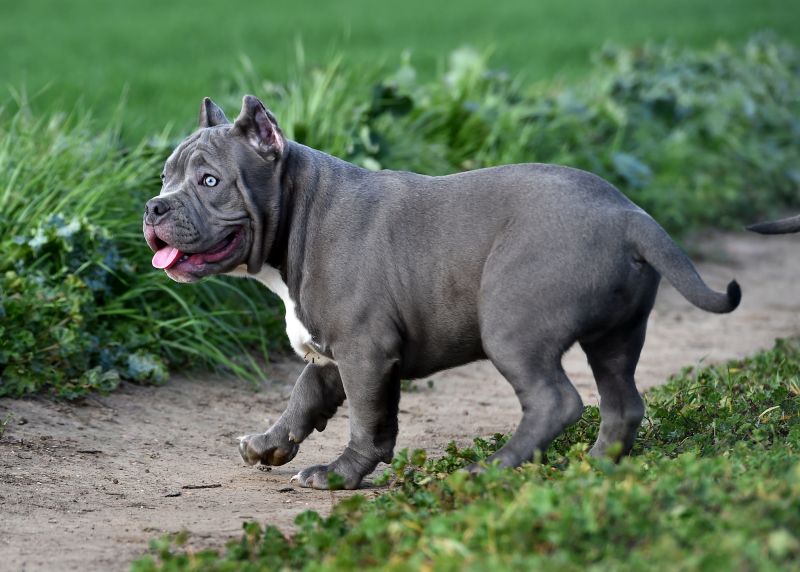
This is a relatively new breed on the scene that the AKC doesn’t recognize, but it’s common enough in the bully breed world to note here. American bullies are the result of breeding APBTs with various bulldogs, including English, American, and Olde English Bulldogges. Unfortunately, this has resulted in extreme body shapes, with broad shoulders and long, low builds leading to premature joint and back issues. American bullies aren’t as athletic as their APBT relatives and may gain weight rapidly, so food selection is critical.
The bottom line is that bully breed nutrition isn’t one-size-fits-all. Feed your bully breed according to her actual breed, not the overall “pit bull” label. If she’s a true “pit bull” or APBT, her nutritional needs and health concerns will differ from others. Remember, just because dogs look alike on the outside that doesn’t mean they’re the same genetically.
***
Any of these best dog foods for pit bulls should fill your pittie’s belly and keep her healthy.
Just be sure that you offer an appropriate quantity of dog food, to ensure her body weight remains within the range recommended by your vet.
We’d love to hear your experiences with these (or any other) pit bull dog foods – let us know what you feed your pit in the comments below.
Are you a proud pittie owner? Make sure to also check out our article on the best dog toys for pit bulls (aka, the toughest toys we know of) as well as our guide to the best dog beds for pit bulls (again, we’ve dug up the most durable dog beds on the market).
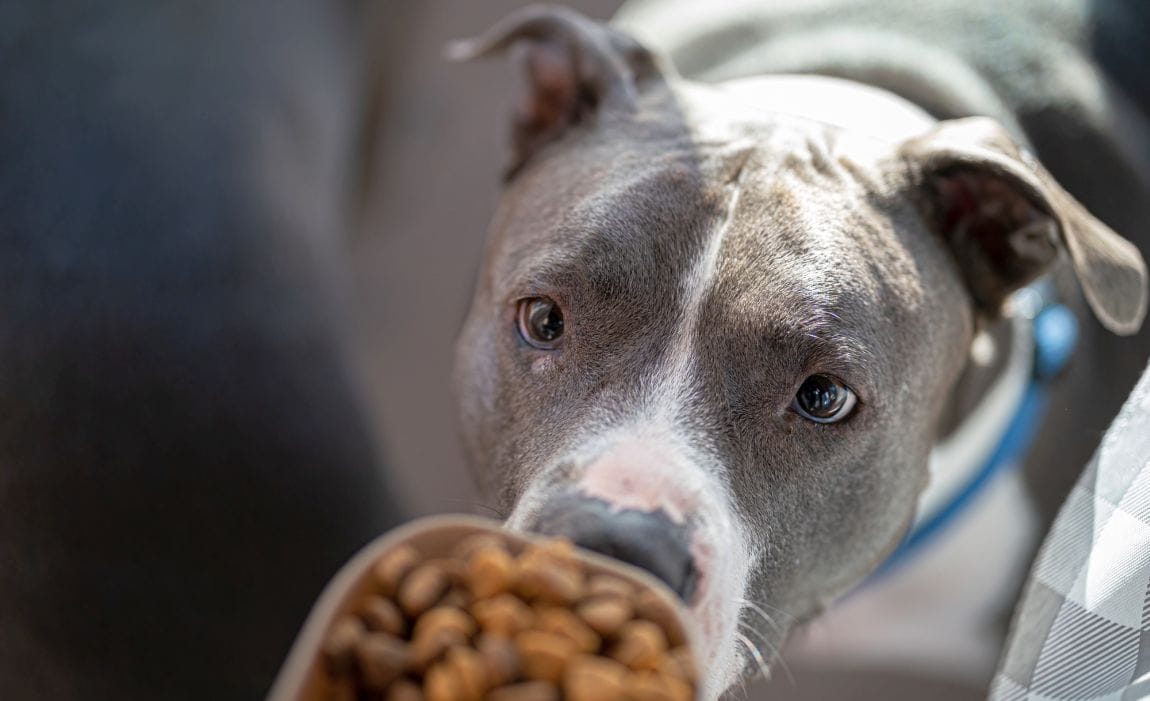
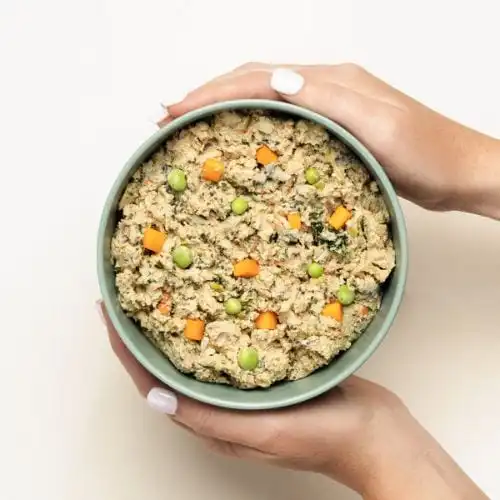
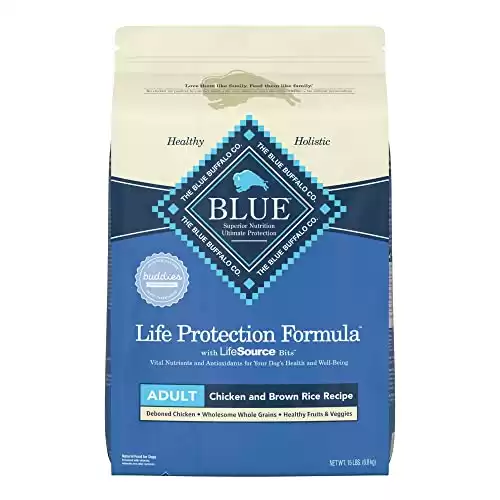
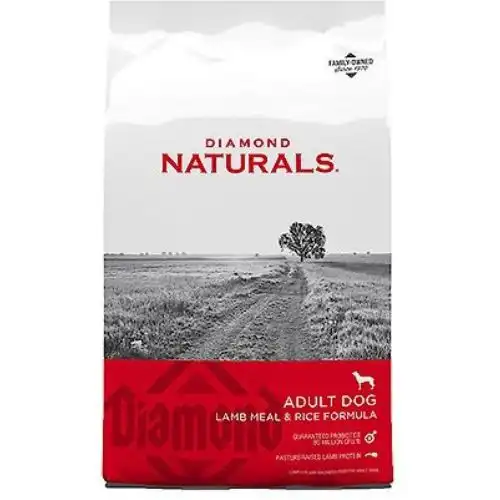
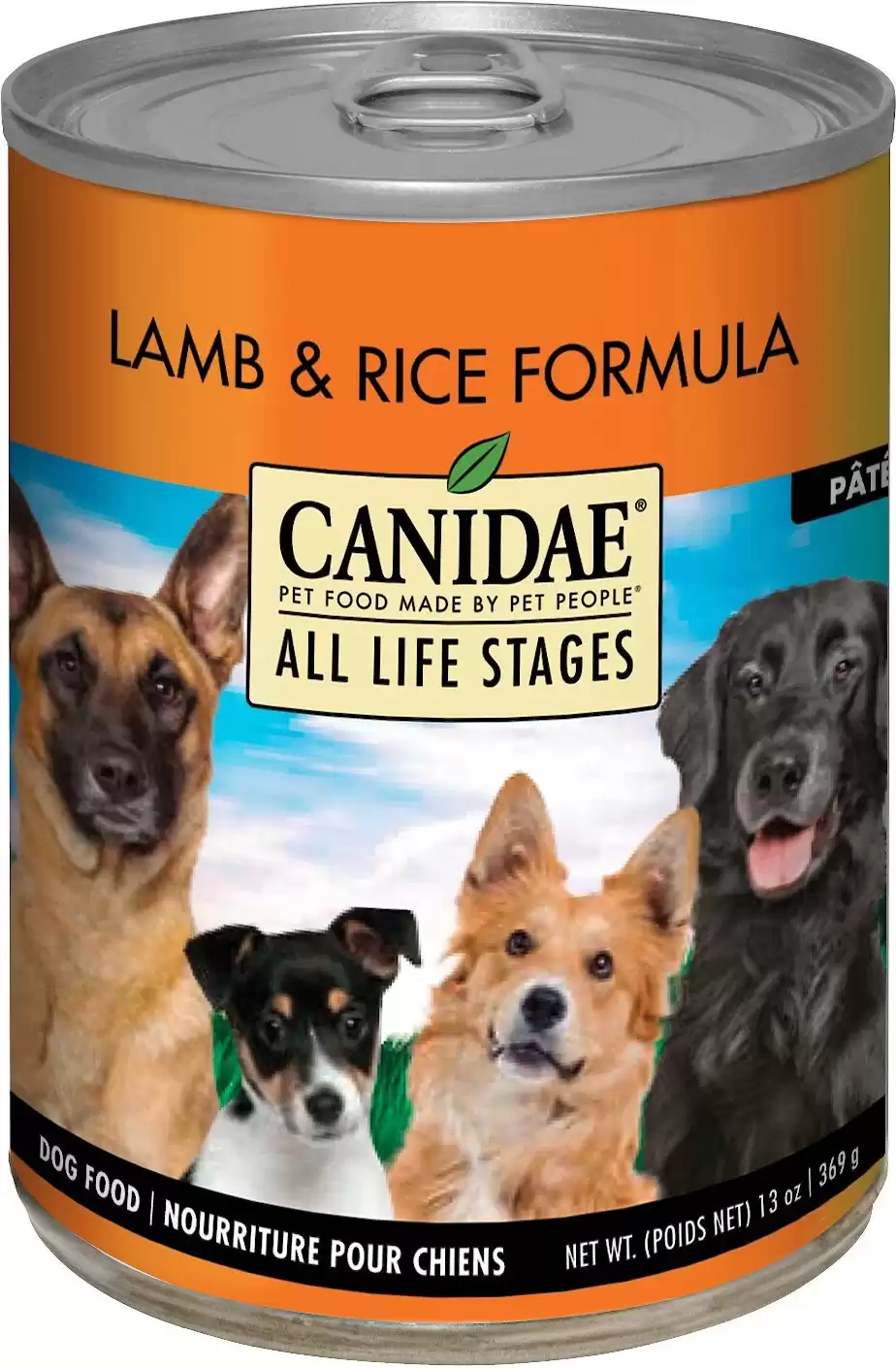


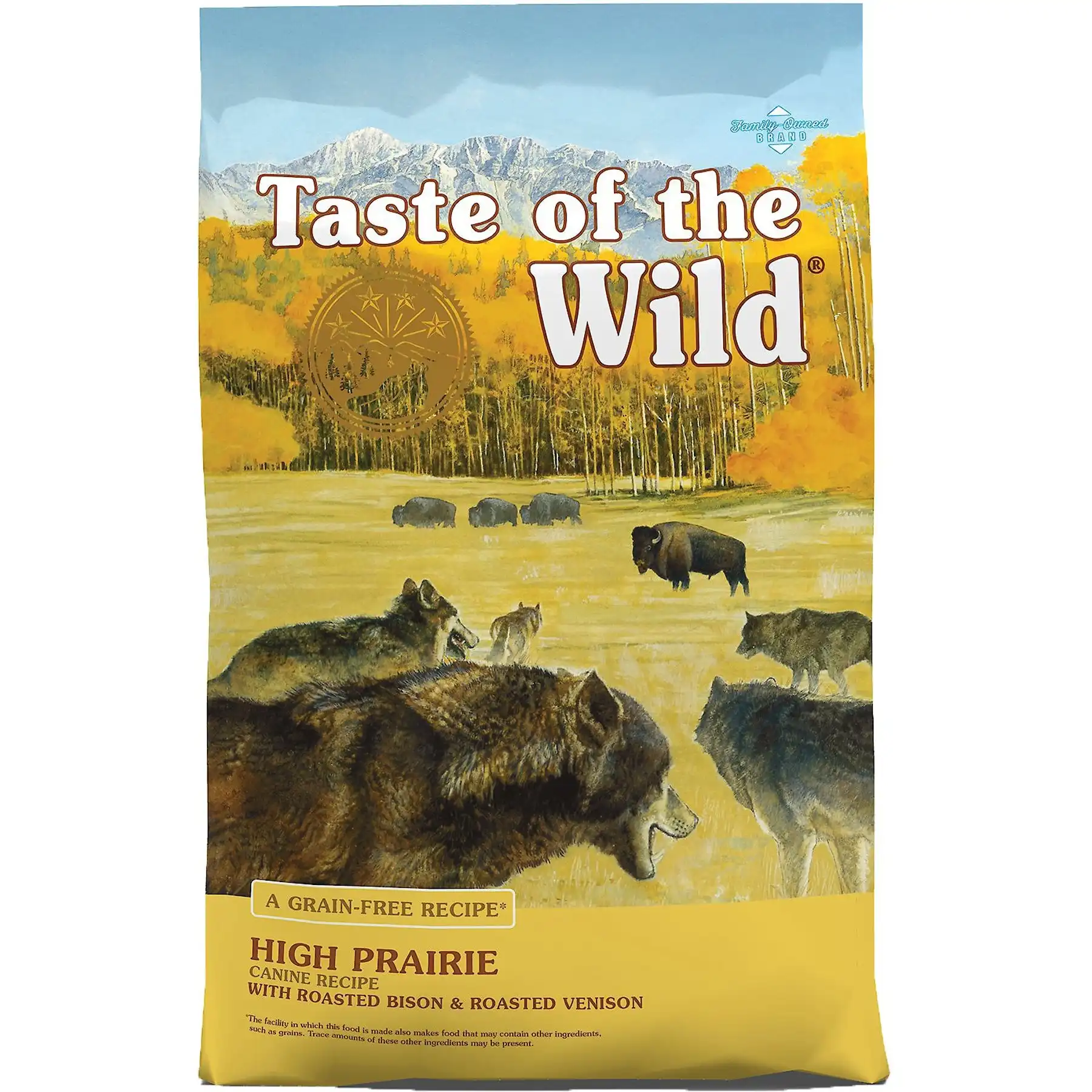
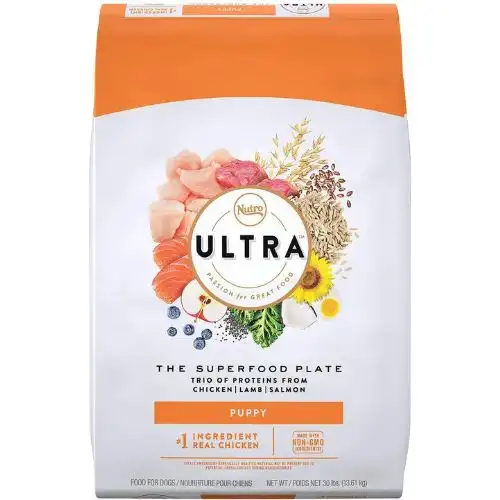
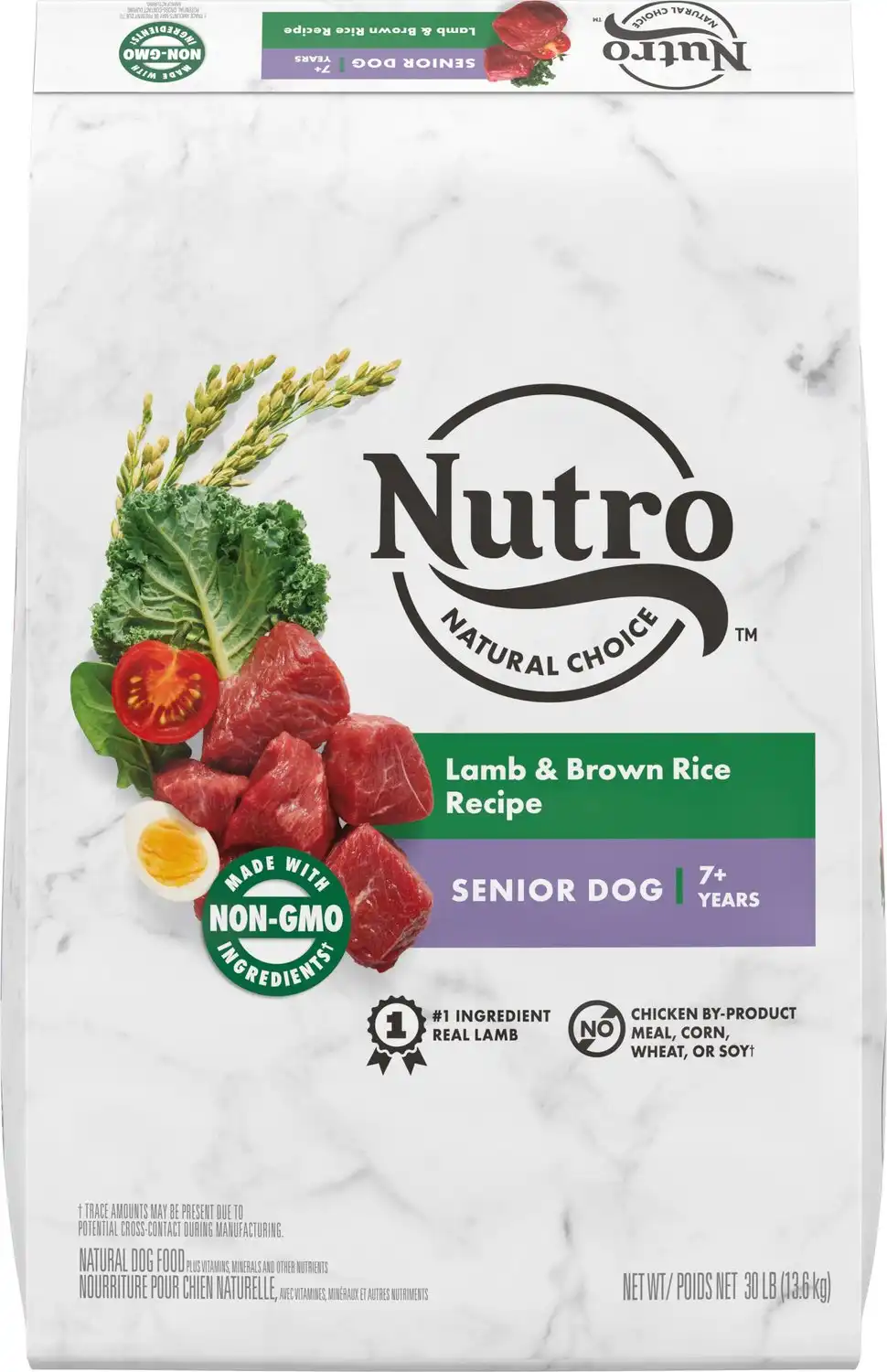
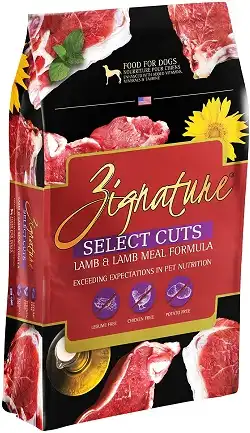
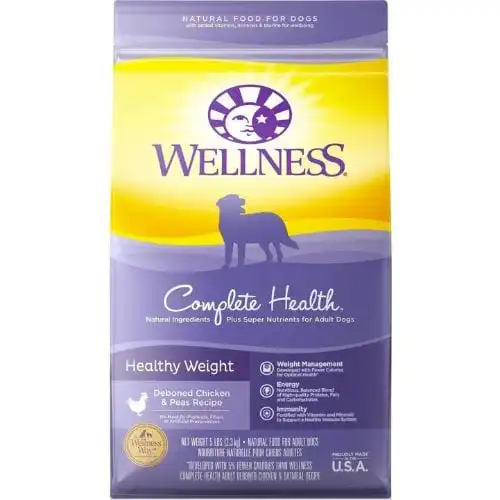
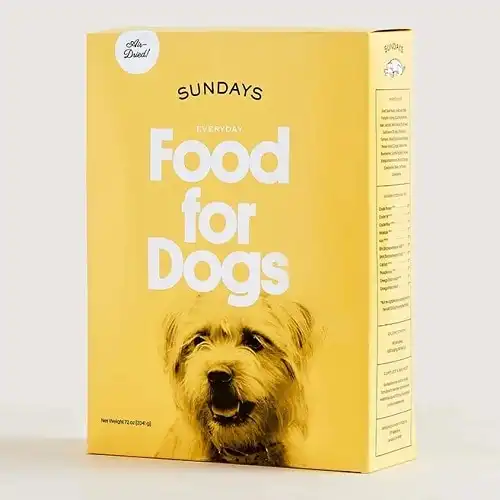
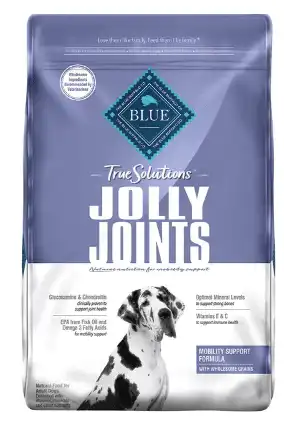
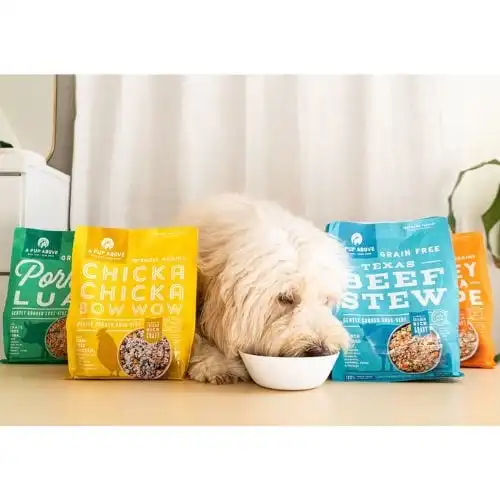
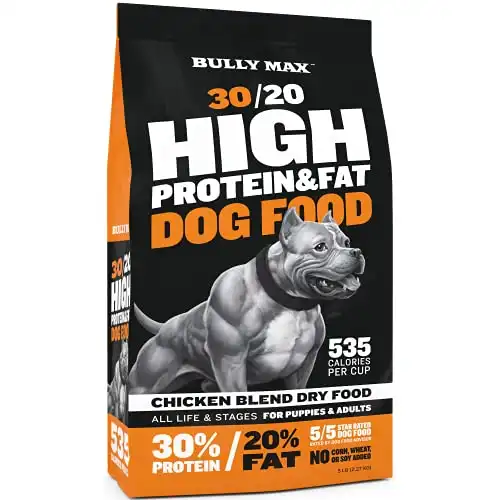




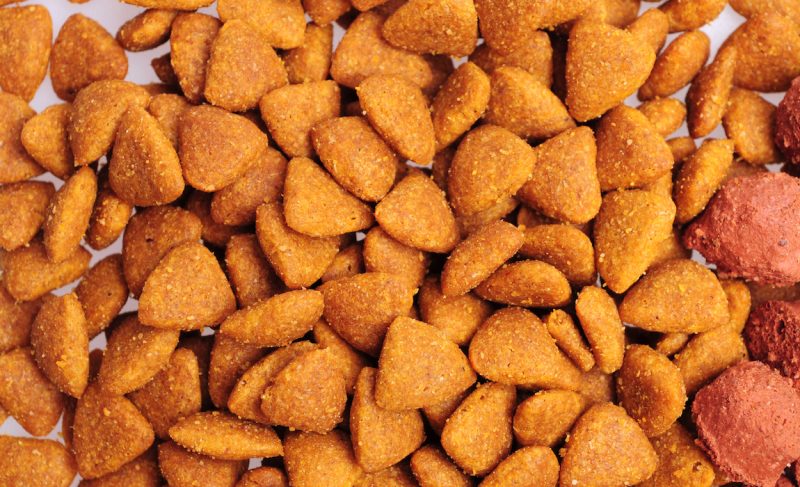
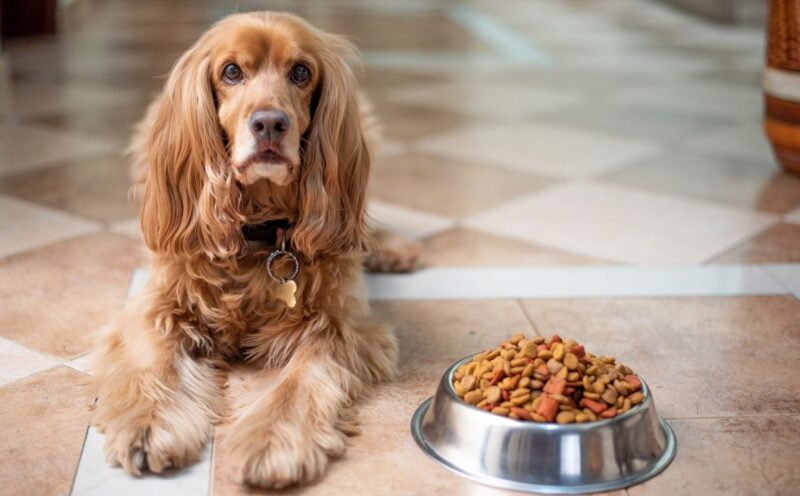
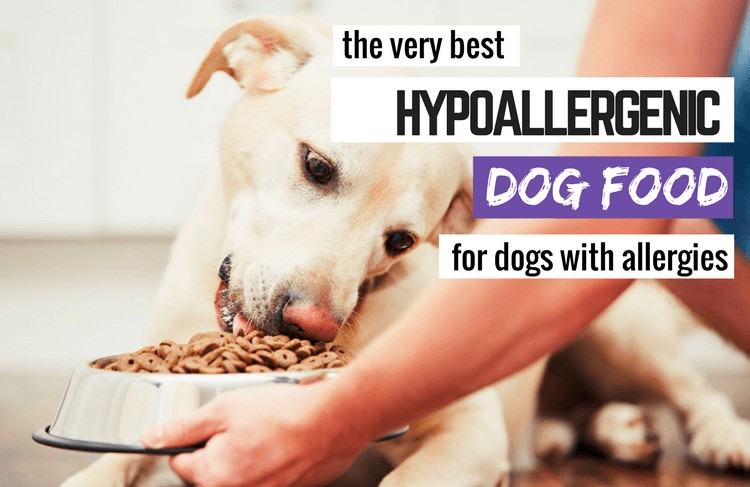
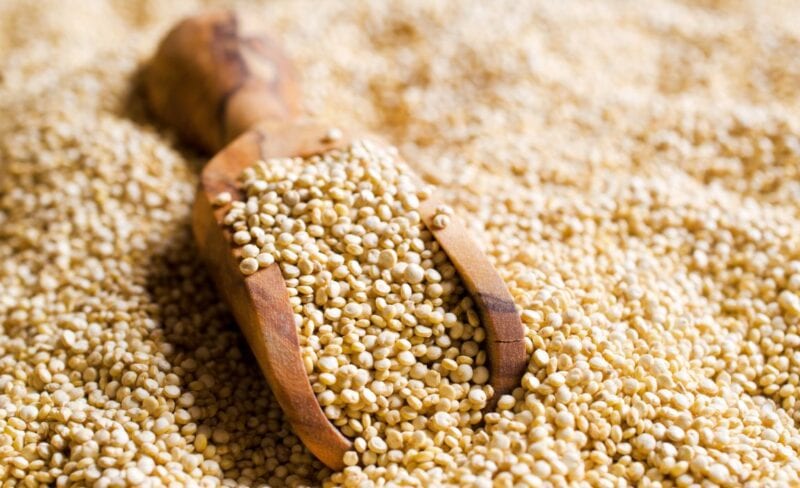
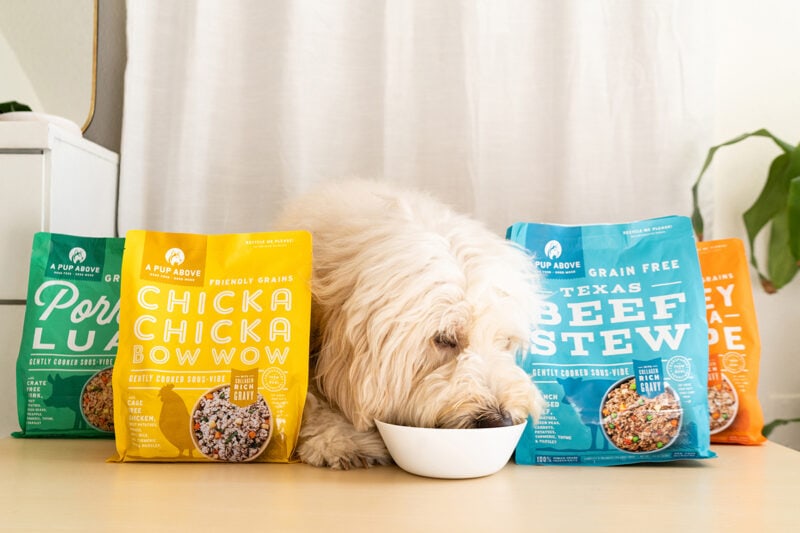
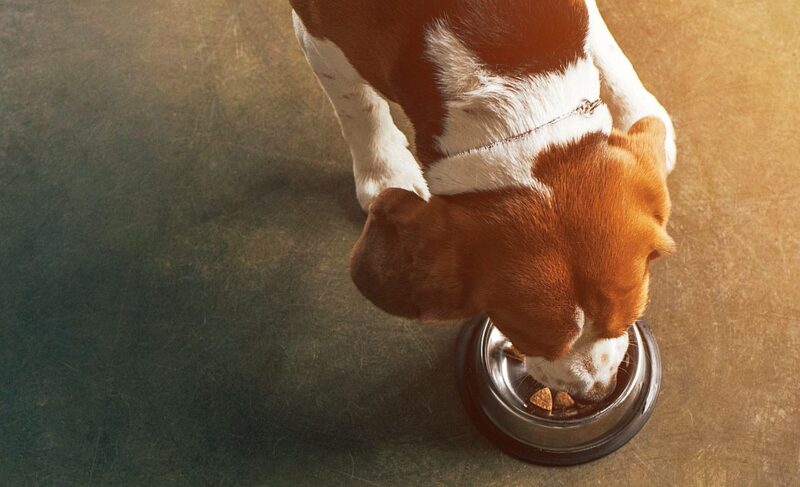
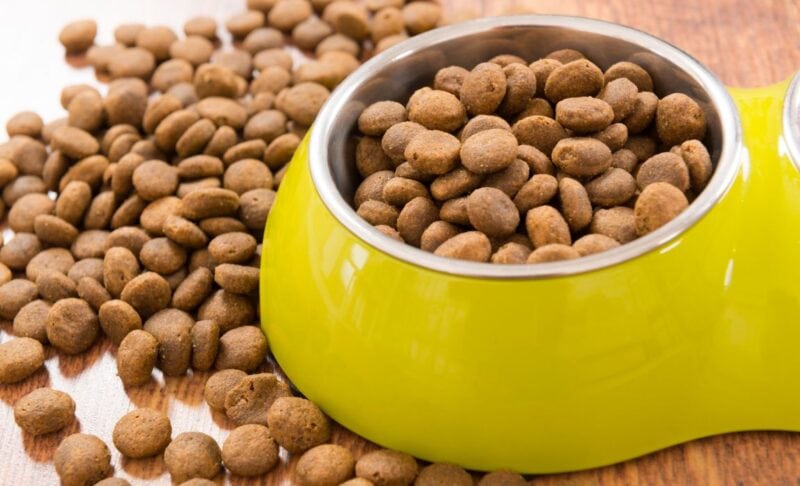

Leave a Comment